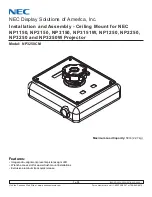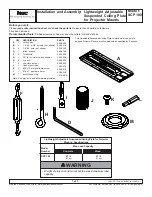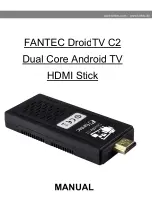
2
©
2018 DJI All Rights Reserved.
Lightning Protection
The DJI
TM
AEROSCOPE
TM
stationary unit system includes surge protection modules in the
antenna module, power module, and Ethernet port. Aeroscope does not include a lightning
induction system, and should be installed within the protected region of another lightning
induction system. The protected region is calculated using the rolling sphere method.
The rolling sphere method assumes that an imaginary sphere of radius h
r
exists above the
surface of a substation. The sphere rolls up and over (and is supported by) lightning masts,
shield wires, substation fences, and other grounded metallic objects that can provide
lightning shielding. A piece of equipment is said to be protected from a direct stroke if it
remains fully within the surface of the sphere.
For a simple scenario in which there is only one lightning rod standing on a flat surface, the
maximum distance that the Aeroscope can be placed from the lightning rod and remain
within the protected region is calculated by the following equation:
R
x
=√(h(2h
r
-h))-√(h
x
(2h
r
-h
x
))
Where:
r
x
is the maximum distance the Aerescope can be placed from the lightning rod.
h
x
is the height of the protected object.
h is the height of the lightning rod.
h
r
is the rolling sphere radius. It depends on the lightning density and the protected matter
and is given in the following table in the Chinese standard.
Protection Level
Rolling Sphere Radius (m)
Type 1
30
Type 2
45
Type 3
60
If Aeroscope is not under the protection of the nearest lightning rod, a designated lightning
induction system should be designed by a qualified professional.
Finally, be sure to note the following:
Ensure that rainwater cannot flow along the Antenna cable into the Aeroscope receiver.
If the pole is made of metal, the frame and the pole should be separated using insulation.
Indoor power outlets must have surge protection.
Indoor Ethernet outlets must have surge protection.
Step-by-Step Installation Guide
For permanent setups, the Aeroscope unit can be mounted anywhere that meets all
installation requirements, such as Lightning Protection, height restrictions, power connection,
and network connection. The most common installation scenario is to attach it to a pole on the
rooftop.
The standard procedure for pole-mounted scenarios is as follows:

























